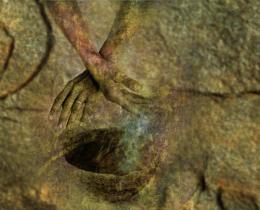Neural networks are a plastic, dynamic architecture, a constellation of neurons that light up momentarily to perform a specific task. This is why, as you mull over a particular thought (good or bad), or practice a particular activity (beneficial or detrimental), you reinforce the neural networks that correlate with those thoughts and skills. Each time a situation reminds you of an actual fearful or dangerous experience from your past and instinctual emotions are brought up, that specific neural network is reinforced. We strengthen the toxic emotions and neural networks in our limbic brain and begin to create subconscious beliefs about life. These beliefs drive our actions and reactions in all experiences.
This reinforcement can be done without our knowledge or when we are milking an emotional trauma for sympathy, whether from others or from ourselves. We might say, for example, “I don’t have to act maturely; after all, I had a terrible childhood.” By creating and repeating such a statement, we reinforce neural networks and emotional habits that are as distinct as the postural habits from an old whiplash injury that has affected the vertebra and muscles of the spine. These networks give rise to emotions, then beliefs that keep us favoring past pain, as well as behaviors that continually reinforce the trauma as well as the pity we have learned to so successfully milk.
We reviewed the MRI scan of a stroke victim’s brain that had been taken just two months prior to his visit at our clinic, and there, for all to see, was evidence of severe damage and loss of tissue, not only in the area associated with speech, but also in adjacent areas associated with facial movement and control of the right arm. Nonetheless, his examination revealed no deficits whatsoever. What had happened? Clearly, his brain hadn’t “healed”—at least not physically—because the area of his initial stroke was still damaged, according to the MRI. Yet, his brain had adapted; that is, it had begun to use alternative pathways to regain functionality of the affected part of his body.
Neuroplasticity is the link between contemplative practices and enlightenment. You train your brain to open the portal to wisdom when you turn your attention away from the everyday world and gaze within. In the past, it was thought that this ability belonged only to a few enlightened individuals, a belief system perpetuated by priests and religious hierarchies who had a vested worldly interest in protecting their privileged status.
In truth, every human being has the brain hardware needed to take this giant leap in consciousness. Our brains evolved to provide us with this equipment long ago. And if we look to the past, we can see the extraordinary feats of creativity and innovation that humankind has achieved by relying on the software that came preloaded in the prefrontal cortex.
Until quite recently, most brain researchers held that, even though the brain is malleable in the early years of a child’s development, the window of opportunity for changing its wiring slams shut by around the age of seven years. While it is true that the brain of a fetus or a young child is like a dry sponge, with the potential to soak up all the knowledge, beliefs, and behaviors it needs to survive in its new worldly environment, the premise that the brain can no longer be rewired past a certain early age has now been upended.
Leading-edge neuroscience research now confirms that we can grow new brain cells and change the actual networks in the brain. Once we provide our neurons with specific nutrients lacking in our everyday diet and embark on stimulating new activities, we can establish new neural networks that help transform limiting beliefs and behaviors and recapture long-lost feelings of joy, optimism, and tranquility.



